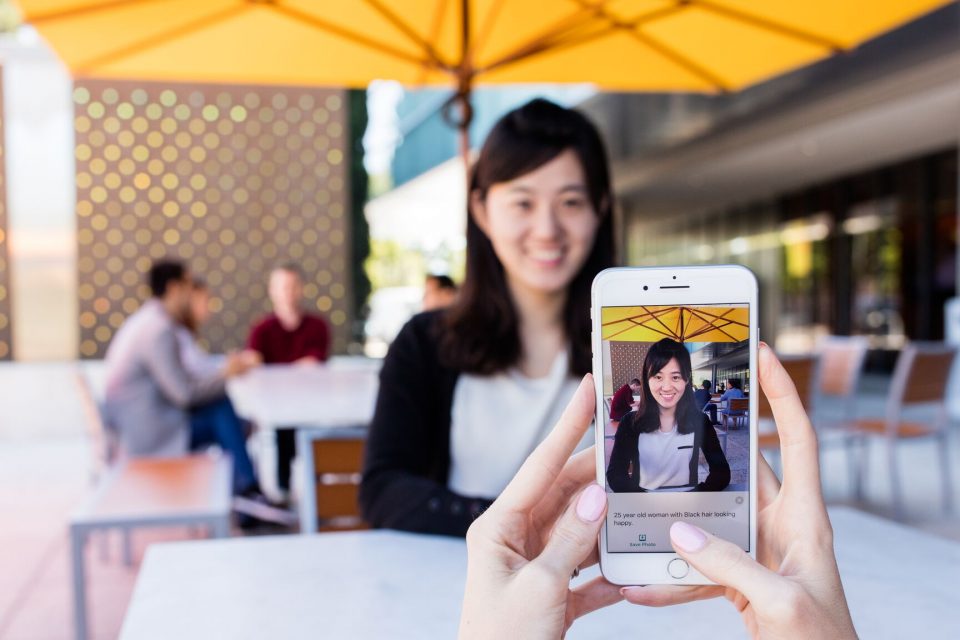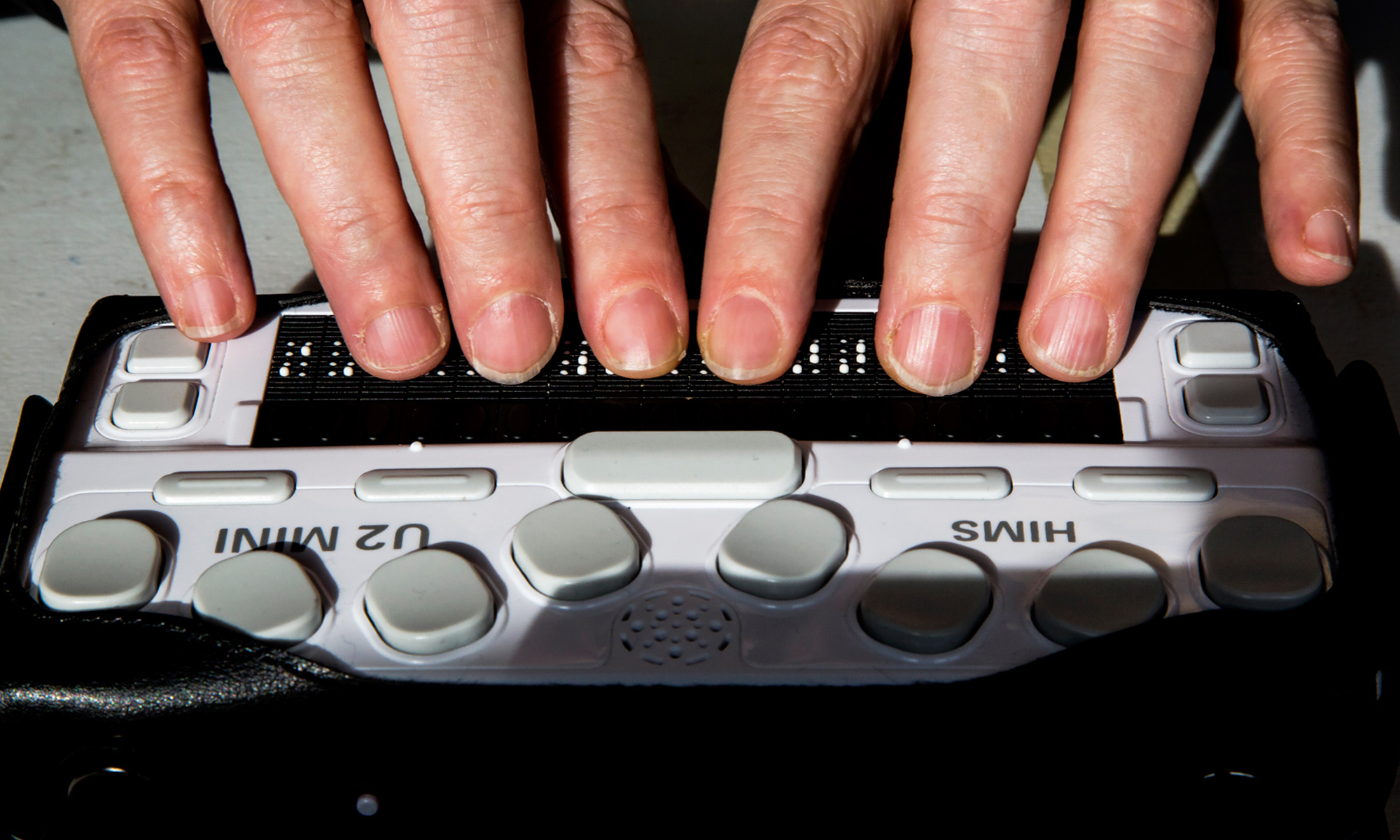Discover Innovative Devices Developed for the Visually Damaged
The growth of innovative devices for the visually damaged stands for a substantial advancement in availability and independence. Technologies such as wise glasses with AI capacities and mobile applications developed to offer auditory descriptions are improving daily experiences for individuals.
Smart Glasses for Navigating

Smart glasses designed for navigating are reinventing the means aesthetically damaged individuals communicate with their atmosphere. These innovative devices utilize a mix of cam innovation, expert system, and acoustic comments to provide real-time details about environments. By employing challenge detection systems, wise glasses can alert individuals to possible risks, making it possible for much safer flexibility in both familiar and strange setups.
The integration of GPS innovation further boosts navigation capabilities, enabling users to get acoustic instructions as they move. This hands-free method not just fosters self-reliance yet also equips visually damaged people to navigate metropolitan landscapes with raised confidence. Additionally, several wise glasses are outfitted with features that determine sites and road indicators, giving contextual information that enhances the individual experience.
In addition, the development of these gadgets is constantly advancing, with business functioning to boost the precision of object recognition and increase the variety of navigational attributes. As clever glasses become extra economical and obtainable, they hold the prospective to substantially transform day-to-day live for aesthetically impaired individuals. Eventually, these ingenious devices stand for a crucial step toward inclusivity, offering boosted flexibility and a better feeling of autonomy for people navigating the world around them.

Mobile Application for Daily Living
Just how can mobile applications enhance the lives of aesthetically damaged individuals? Mobile apps are reinventing the means aesthetically impaired users navigate their settings, manage everyday jobs, and accessibility information. These applications offer vital assistance through different performances, cultivating freedom and improving high quality of life.
Numerous cutting-edge mobile apps are designed specifically for daily living. Apps like Be My Eyes connect visually impaired users with sighted volunteers via video clip calls, enabling them to receive real-time assistance with tasks such as reviewing tags or browsing unfamiliar rooms. In A Similar Way, Seeing AI, created by Microsoft, makes use of fabricated knowledge to explain surroundings, checked out message, and identify objects, effectively changing a smartphone right into a powerful tool for daily aid.
Furthermore, navigation apps tailored for the visually damaged, such as Aira and BlindSquare, provide audio-based instructions and ecological information, allowing individuals to traverse their environments safely and with confidence. Beyond navigating and instant help, mobile apps additionally support company and task monitoring, with functions that assist individuals establish reminders, create to-do lists, and track consultations. In summary, mobile applications serve as important sources, equipping aesthetically impaired people to lead more independent and meeting lives.
Wearable Technologies for Help
Empowerment via innovation is increasingly apparent in the world of wearable devices made to help aesthetically impaired individuals. These cutting-edge tools integrate flawlessly right into life, improving navigating and providing vital responses to users. For circumstances, smart glasses furnished with cameras can acknowledge faces and check out text out loud, enabling customers to communicate more with confidence in social and specialist settings.
An additional notable improvement is the use of haptic comments systems in wearable gadgets. These systems use vibrations or other tactile signals to communicate article source info regarding the individual's setting, such as barriers or adjustments in surface, enhancing wheelchair and safety and security. Wearable modern technologies also include wristbands that connect to smartphones, alerting users to alerts via refined resonances, hence improving connectivity without reliance on aesthetic signs.
As these modern technologies remain to advance, they are not just enhancing self-reliance for visually damaged people yet additionally promoting a higher sense of incorporation in culture. By bridging the gap between obstacles encountered in everyday living and the potential for freedom, wearable innovations act as pivotal devices in the pursuit for equality and empowerment for those with aesthetic disabilities.
Audio Summary Devices
Sound summary tools play a vital function in enhancing accessibility for aesthetically impaired people, supplying them with the ability to involve with visual media. Screen readers for the blind. These tools offer narrated summaries of key aesthetic elements in films, tv shows, and live efficiencies, making certain that customers can fully understand the context and feelings communicated via visuals
Audio description can be incorporated into different systems, including streaming services, movie theater screenings, and live theater. Numerous preferred streaming services now consist of audio summary as an availability function, permitting audiences to choose it conveniently. Along with traditional media, specialized applications also exist, supplying audio summaries for art events, museums, and other cultural occasions.
The performance of audio summary rests on the skill of the storytellers, that have to convey visual information succinctly without taking away from the original audio. Advancements in this area are additionally leading the way for more personalized experiences, where users can readjust the level of information and pacing according to their preferences.
Braille Innovations and Instruments
Braille devices and advancements have actually considerably transformed the way aesthetically impaired people engage with text and info. Modern improvements have actually led to the growth of functional devices that improve proficiency and self-reliance amongst customers.
Additionally, portable Braille notetakers integrate standard Braille input with contemporary capabilities, helping with note-taking, scheduling, and record modifying on the move. Screen readers for the blind. These small tools usually include text-to-speech capacities, bridging the void between Braille and acoustic details
In addition, ingenious Braille printers have actually arised, permitting users to produce Braille labels, papers, and instructional materials efficiently. This company website ease of access fosters higher engagement in academic and professional atmospheres, eventually promoting inclusivity.
Furthermore, study right into smart Braille technologies remains to expand. Tools that integrate fabricated knowledge are being checked out to give real-time navigation help and contextual details, improving the user experience in varied setups. On the whole, these technologies show a commitment to empowering aesthetically damaged individuals with technology, guaranteeing they can quickly access and involve with the world around them.

Conclusion
The advancement of innovative devices for the visually damaged substantially improves freedom and quality of life. These technologies not only foster better incorporation however also advertise freedom in daily tasks, ultimately contributing to an extra easily accessible and fair culture for aesthetically click for info impaired individuals.
As wise glasses end up being a lot more cost effective and easily accessible, they hold the possible to considerably transform day-to-day life for aesthetically impaired customers. Mobile apps are reinventing the way visually damaged customers browse their settings, manage daily tasks, and access details. Apps like Be My Eyes attach visually damaged individuals with sighted volunteers via video phone calls, permitting them to obtain real-time help with jobs such as reviewing tags or browsing strange rooms.In addition, navigating applications tailored for the aesthetically damaged, such as Aira and BlindSquare, provide audio-based instructions and ecological details, making it possible for individuals to traverse their environments safely and with confidence.The development of ingenious devices for the aesthetically impaired dramatically enhances self-reliance and top quality of life.
Comments on “Enhance Accessibility with Braille Displays and Notetakers”